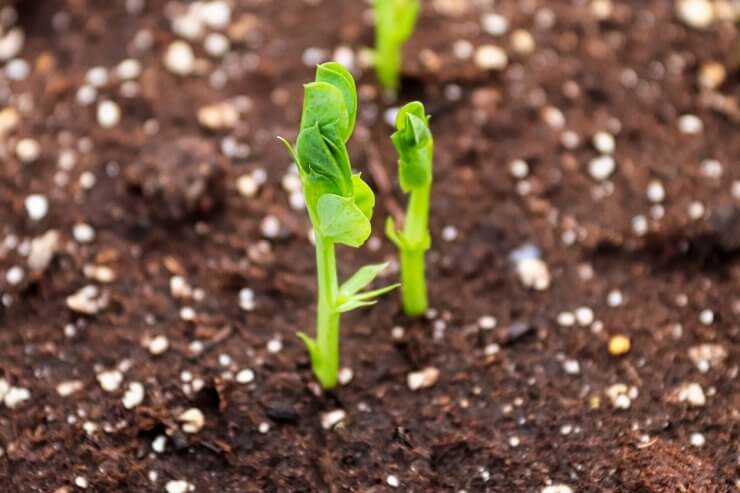
Pea plant in quality soil.
Having healthy pea plants starts with having great soil in which to grow them. Peas do best in loamy soil with good drainage. If possible, prep your bed for spring by turning over the soil the previous fall and adding 2 to 3 inches of compost or manure. Peas make their own nitrogen, so you want to be careful not to overdo that nutrient or you’ll get lots of foliage and fewer flowers or pods. However, peas do need phosphorus and potassium, so it’s helpful to add wood ashes and bone meal before planting.
If you don’t make your own compost, you can buy bulk compost from most gardening supply stores. Try to find “certified compost” with the U.S. Composting Council’s Seal of Testing Assurance (STA)—their rigorous testing process and standards will ensure you get quality compost.
With your compost and amendments on top of your soil, use a spade fork to turn the soil over and mix everything together. Remember, soil health is one of the most important things to ensuring that your pea plants thrive and produce quality fruit.
Peas are very good neighbors in the garden: all types of pea plants help nearby vegetables thrive through a process known as nitrogen fixation. Here are some plants that pea plants like to share space with:
- Beans
- Carrots
- Celery
- Corn
- Cucumber
- Eggplant
- Nasturtiums
- Parsley
- Peppers
- Potatoes
- Radish
- Spinach
- Strawberries
- Turnips
There is just one type of plant that doesn’t get along with peas, and that’s the allium family. Onions, chives, and garlic will stunt the growth of peas, so keep them well-separated in the garden.
What type of soil do you use to grow your peas? Do you use compost at all? What are your best tips for creating optimal soil for your peas? Please share your techniques with us.


 Previous
Previous

